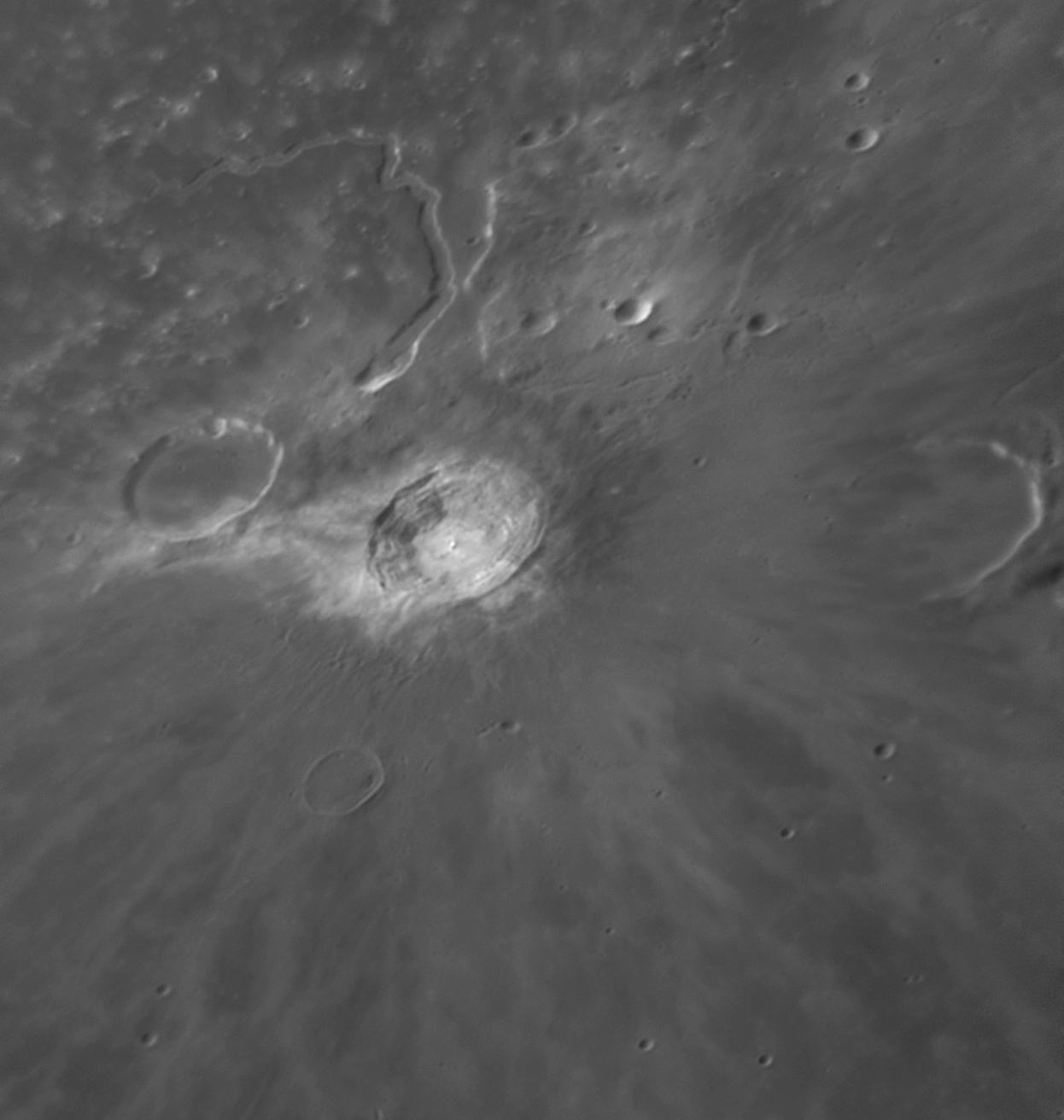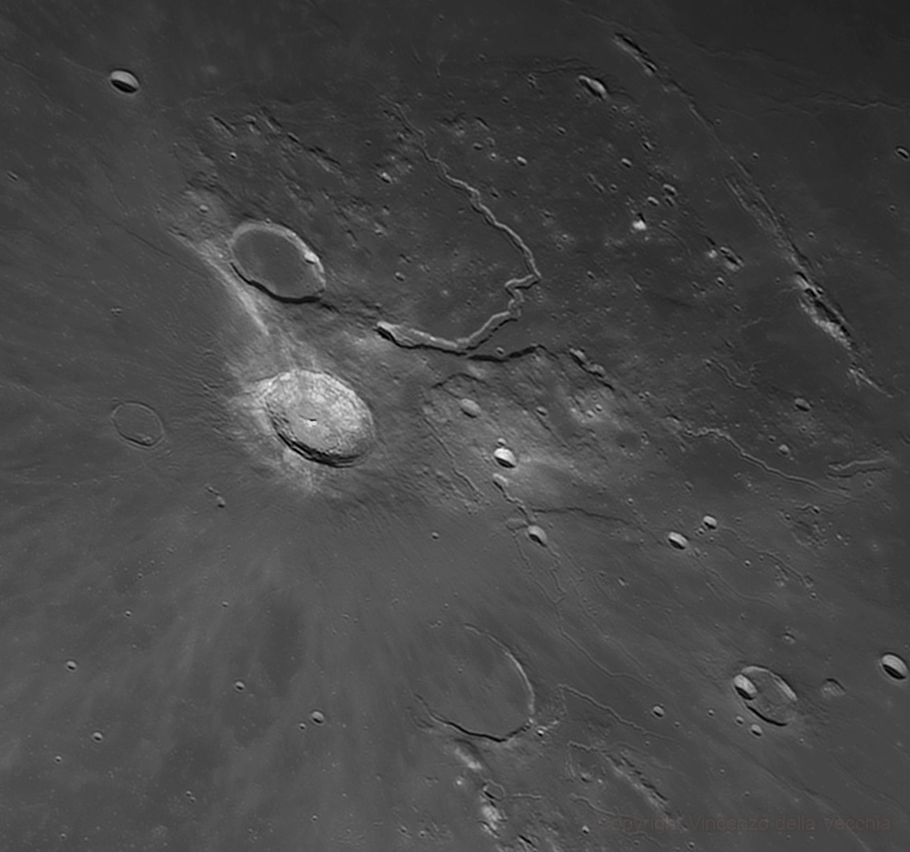Aristarco, nel Mare delle Tempeste, è una delle formazioni lunari più brillanti, ed appare circondato da un’ampia raggiera di ejecta. È inoltre un sito ben noto di fenomeni lunari transienti (TLP). Aristarco è accompagnato dalla caratteristica Vallis Schröteri, a forma di serpente. Secondo un’affascinante ipotesi avanzata dal Whitaker, i nomi per i crateri Aristarco, Keplero e Copernico non furono scelti da Riccioli a caso. Infatti, sebbene egli abbia cercato di salvare le apparenze, gettando l’eretico Aristarco nel Mare delle Tempeste, i raggi dei tre crateri li connettono l’uno con l’altro, quasi a voler legare in un eterno abbraccio i tre più grandi sostenitori dell’eliocentrismo.
(ENG) Aristarchus, in the Sea of Storms, is one of the brightest lunar features, and appears surrounded by a large patch of ejecta. It is also a well-known site of transient lunar phenomena (TLP). Aristarchus is accompanied by the characteristic snake-shaped Vallis Schröteri. According to a fascinating hypothesis by Whitaker, the names for the craters Aristarchus, Kepler and Copernicus were not chosen by Riccioli randomly. In fact, although he tried to keep up appearances by throwing the heretic Aristarchus into the Sea of Storms, the rays of the three craters connect them to each other, just in a great, eternal hug between the greatest heliocentrists.
Aristarchus e Vallis Schröteri
In questa ripresa sono visibili Aristarco, la Valle di Schröter e il cratere parzialmente sommerso Prinz (a destra).
(ENG) Aristarchus, Vallis Schröteri, and the partially flooded crater Prinz (right) are visible.
Il plateau di Aristarchus
Aristarco è situato sul bordo di un altipiano di forma chiaramente rettangolare, ben ripreso in questa immagine.
(ENG) Aristarchus is actually on the edge of a rectangular highland, well visibile here.

